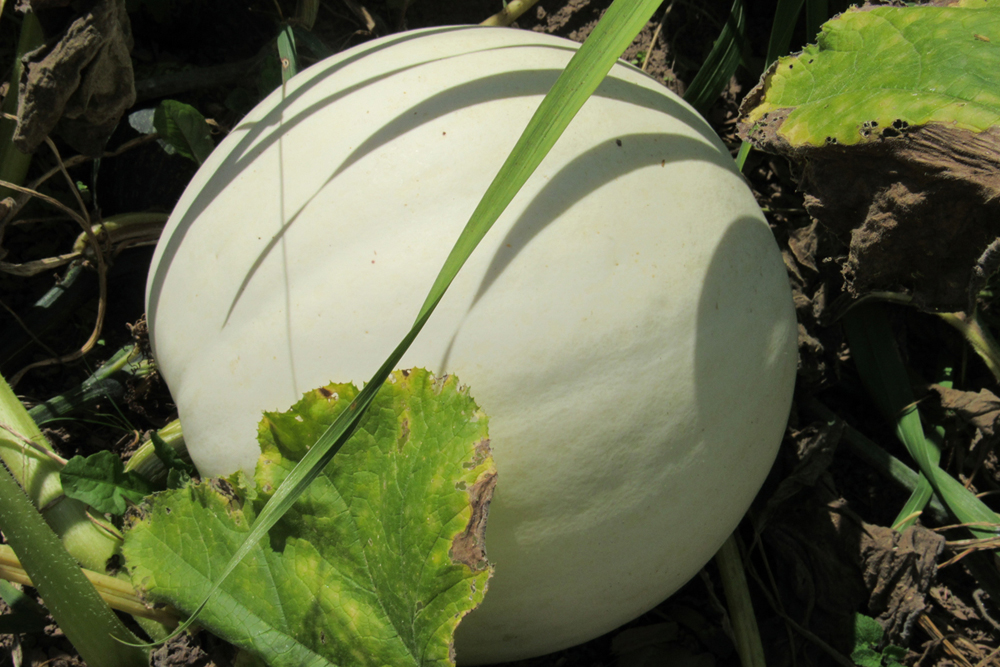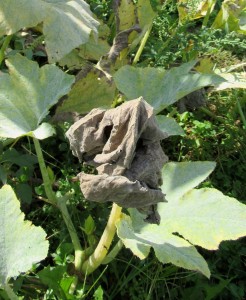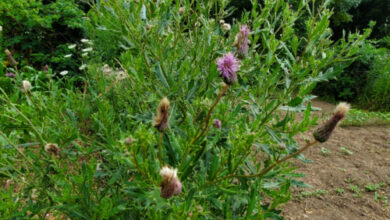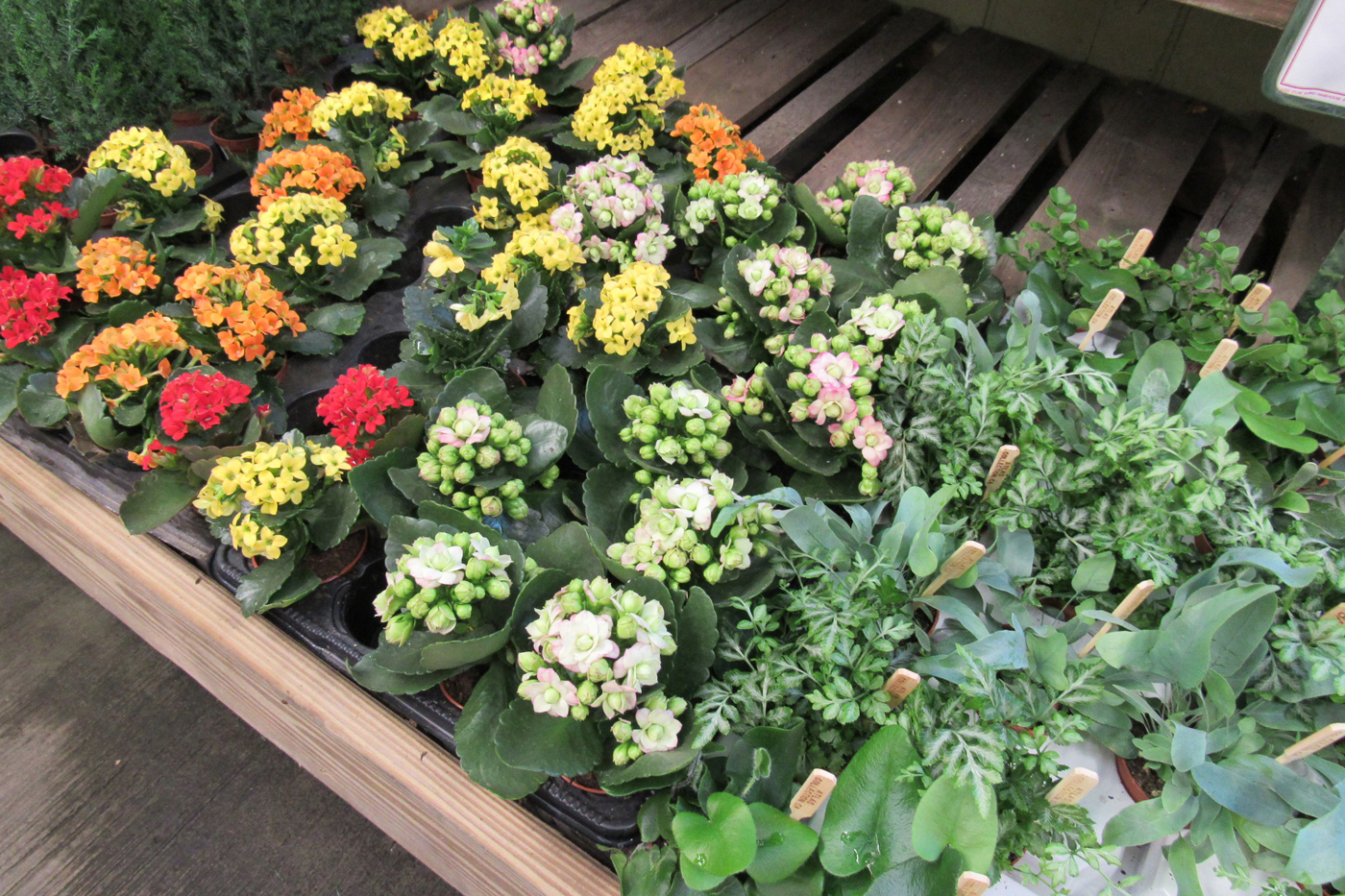Pumpkins and powdery mildew a perennial garden problem

Growing pumpkins, gourds and winter squash for autumn displays and decorating is one of the most enjoyable parts of the growing season for me. Cucurbits, however, have their share of frustrations in the form of pests and diseases – not the least of which are powdery mildews.
Without fail, the disease affects my garden each year. Squash and pumpkin vine leaves which are healthy, voluptuous and deep green become sickly and whitened and within a few days turn black and die.

Powdery mildews hit almost every kind of plant – from grasses to weeds, to shrubs, to fruit trees and ornamentals. You’ve seen it on lilacs and it’s prevalent on grapes, roses, and apple trees, to name a few of the plants affected. Characterized by patches of white to grayish powdery-looking growth on the leaves, the tiny, sphere-shaped fruiting structures go from white to yellow-brown to black.
Podosphaera xanthii and Erysiphe cichoracearum are the two most commonly recorded fungi that cause powdery mildew in cucurbits, according to Cornell University’s Department of Plant Pathology.
The disease is believed to spread northward with airborne conidia from cucurbit crops grown early in the season in southern states. When they land on host plants, the disease can develop quickly under favorable conditions.
High relative humidity is favorable for infection, although infection can occur at relative humidity levels as low as 50 percent. Dryness is favorable for colonization, sporulation and dispersal. Infection can occur anywhere between 50 degrees and 90 degrees Fahrenheit. Development is arrested only when daytime temps rise to 100 degrees or more.
Powdery mildews typically set in late in the season for me. That means my crop is pretty-much ready for harvest, but the disease can affect the quality of the fruit.
Winter squash for example, can have poor storability and pumpkins can suffer poor rind color and shriveled, discolored handles – both things I have noticed in past years. Stress from the disease can lead to speckling and other imperfections in the rind.
There are ways to reduce and prevent powdery mildews. Look for resistant varieties, although in the cucurbit world, genetic resistance is more extensive for cucumbers and melons.
Other cultural controls can be very helpful. Because favorable conditions for the disease include dense plant growth and low light intensity, plant in a sunny, well ventilated location. As soon as you spot signs of infection, remove the leaves affected.
There are approved biopesticides for organic production which contain botanical oils, bicarbonates, hydrogen dioxide and lipopeptides. When applying, good coverage is critical for effective control.
Chemical fungicides should be applied every 7-10 days if the disease is caught early in development. To prevent the disease, apply fungicides when plants start to run and or produce fruit. Thoroughly cover the undersurface of leaves and leaves low on the canopy where the fungus develops best.
Colorado State University Extension suggests using a baking soda/horticultural oil mixture as a non-toxic alternative. Use one tablespoon of baking soda to 2.5 tablespoons of horticultural oil in one gallon of water. Another recipe from the University of Illinois Extension suggests four teaspoons of baking soda to one gallon of water with an equal amount of liquid dish soap.
Additionally, Colorado State University Extension suggests that because succulent tissue is more susceptible to infection, avoid fertilizing with nitrogen in late summer if the disease is a problem. Fungicides will be most effective when combined with cultural controls.
Right now, beautiful pumpkins are readily available at area farm markets and stands, but I hope you also have the thrill of harvesting at least one or two from your own home grown pumpkin patch as well.





